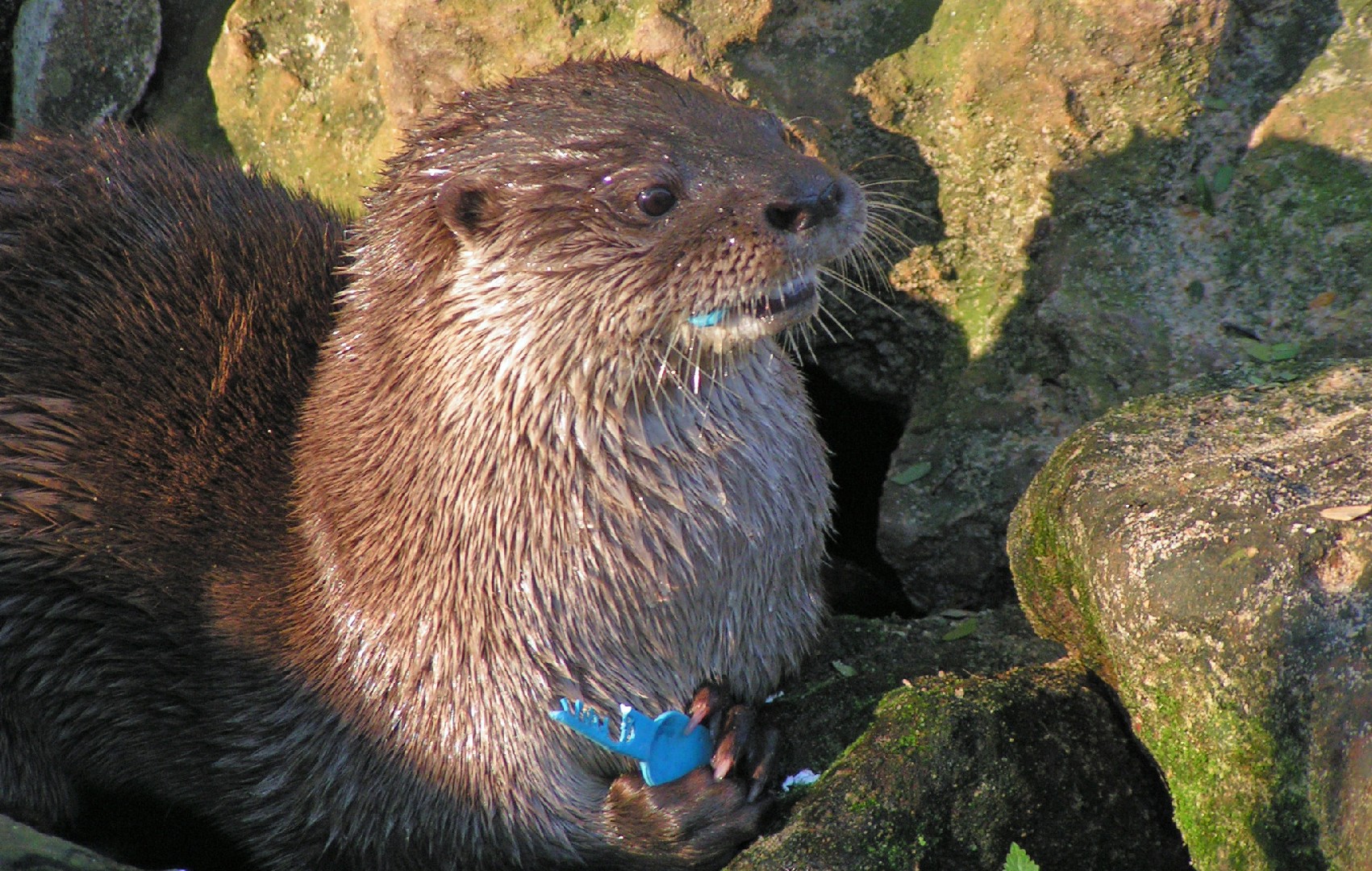Neotropical otter
A species of New world river otters, Also known as La plata otter Scientific name : Lontra longicaudis Genus : New world river otters
Neotropical otter, A species of New world river otters
Also known as:
La plata otter
Scientific name: Lontra longicaudis
Genus: New world river otters
Content
Description General Info
 Photo By WolfmanSF , used under CC-BY-SA-2.5-AR /Cropped and compressed from original
Photo By WolfmanSF , used under CC-BY-SA-2.5-AR /Cropped and compressed from original Description
The neotropical otter is covered in a short, dark grayish-brown pelage. Fur color is lighter around the muzzle and throat. They possess a long wide tail, with short stout legs and fully webbed toes. Sexually dimorphic, the males are about 25% larger than the females. Body mass of the otter generally ranges from 5 to 15 kilograms. Neotropical otters will communicate with nearby otters via scent marking. Communication may also occur via whistles, hums, and screeches. The dental formula seldom varies from that of Eurasian otters, except in the few cases of otters that have dental anomalies. Females and males have the same formula. The dental formula (for half the skull) is as follows: Upper: 3 incisors, 1 canine, 4 premolars and 1 molar Lower: 3 incisors, 1 canine, 3 premolars and 2 molars 
General Info
Lifespan
12-20 years
Diet
Neotropical otter primarily feeds on aquatic organisms, with a substantial consumption of fish and crustaceans. This species also diversifies its diet through occasional consumption of small mammals, birds, and amphibians.
Appearance
Neotropical otter is a medium-sized aquatic mammal with a slender, streamlined body. It is covered in a dense, glossy fur that ranges from brown to grayish-brown. A distinguishing feature is its long, tapered tail that is flat on the bottom, aiding in it swimming. The underparts are lighter, often silvery. No major differences in appearance due to age, gender, or subspecies are noted.
Behavior
Neotropical otter displays predominantly nocturnal behavior, partaking in solitary hunting and foraging in aquatic environments. Known for its agility in water, it utilizes a combination of tactile and visual stimuli for locating prey. Notably territorial, neotropical otter marks its territory via scent glands. In social structures, it exhibits a flexible system, from solitary to small family groups.
Population
Decreasing
Scientific Classification
Phylum
Chordates Class
Mammals Order
Carnivores Family
Mustelids Genus
New world river otters Species
Neotropical otter